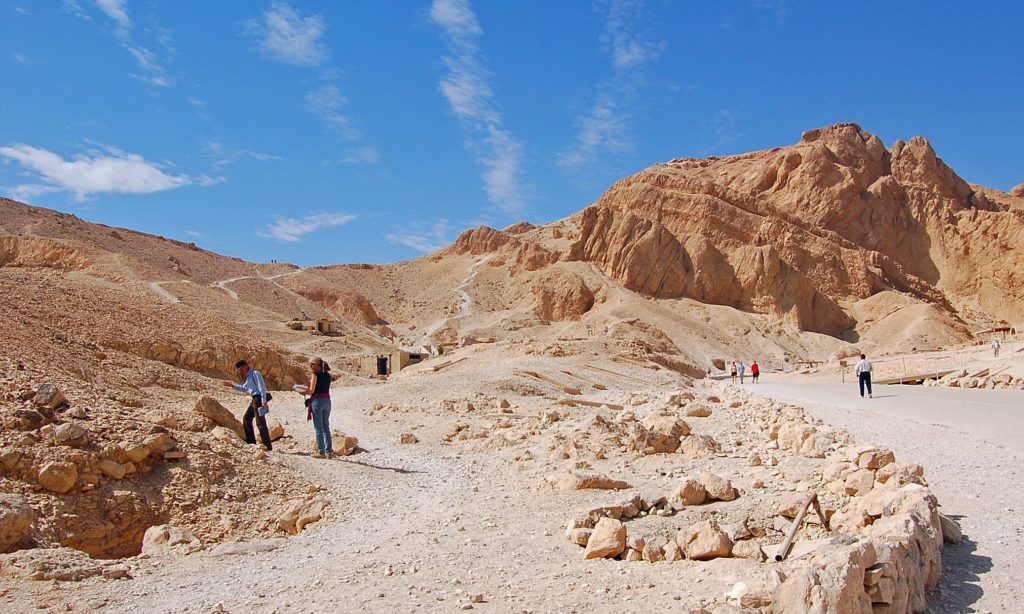
Most Americans have probably heard of Egypt’s Valley of the Kings. Less well known is a nearby valley that contained the tomb of one of ancient Egypt’s most celebrated women.
In about 1600 B.C., Egyptians began burying their pharaohs, along with the pharaoh’s wives and children, in concealed tombs cut deep into the limestone in a secluded valley on the west bank of the Nile near what is now Luxor. In about 1300 B.C., with the coming of the powerful pharaohs of the nineteenth dynasty, new tombs in this Valley of the Kings were restricted to men. A similar valley a few miles to the south, which the Egyptians called Ta-Set-Neferu (The Place of Beauty), was chosen for the tombs of royal women, probably starting with a wife of Ramses I, the nineteenth dynasty’s founder.
Since the early twentieth century, archaeologists have uncovered more than 90 tombs in what is now popularly called the Valley of the Queens. The most exquisitely decorated tomb belonged to Nefertari, the favorite wife of Ramses II, who ruled Egypt for 66 years and is often associated with the Biblical Exodus. When Nefertari’s tomb was discovered in 1904, its contents, including the sarcophagus, had been stolen long before, but the colorfully painted reliefs on the walls and ceilings remained remarkably intact and vibrant, leading some to compare it to the Sistine Chapel. One set of reliefs in the queen’s burial chamber illustrates teachings from the Book of the Dead, including the formula the queen was required to recite to gain access to the afterlife, a kind of prompt if she forget the words. Other reliefs include a short love poem from Ramses. In 2016, two dismembered and mummified legs found in the tomb were identified as those of Nefertari. What happened to the rest of her remains a mystery.